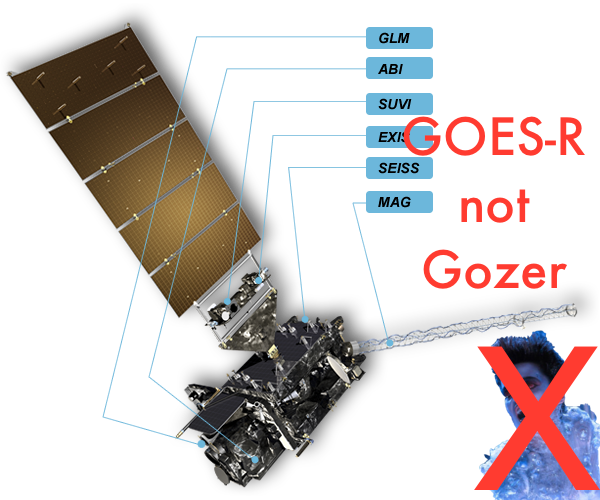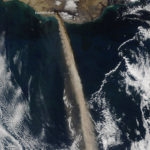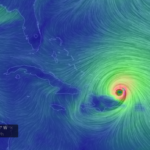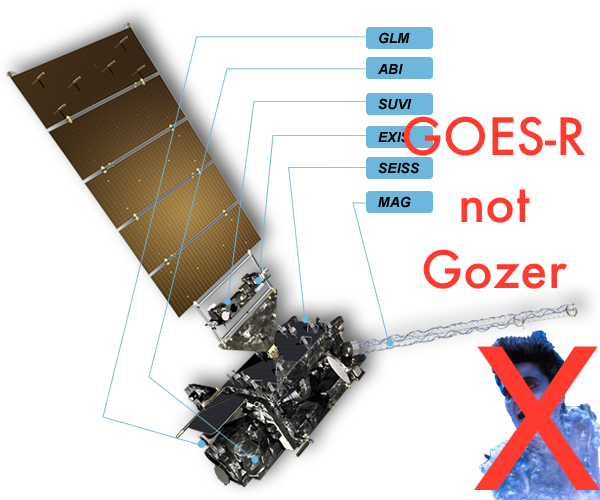
What did you do this weekend? Well if you were NASA, you successfully launched NOAA’s brand-spanking new weather satellite GOES-R. Packed with six instruments, this geostationary satellite will be parked over the western US taking all the datas. GOES-R literally has science eyes on the back of its head, with two instruments pointed at the sun, two instruments checking out the weather in outer space, and the last two pointed at earth. Actually scratch that, it’s like the all knowing eye for weather good.
But as an oceanographer, my favorite instrument has got to be the earth-spying Advanced Baseline Imager. It measures all the sea surface temperatures. All those maps with colorful whirls of warm and cold water? This satellite makes the measurements that makes that. Say that three times fast, or in this case every 15 minutes. Plus, they put this instrument on earth science steroids for 2016. The ABI monitors 16 different bands of light. That’s a whopping 11 more than its predecessor, adding up to a grand total of 25 different types of data.
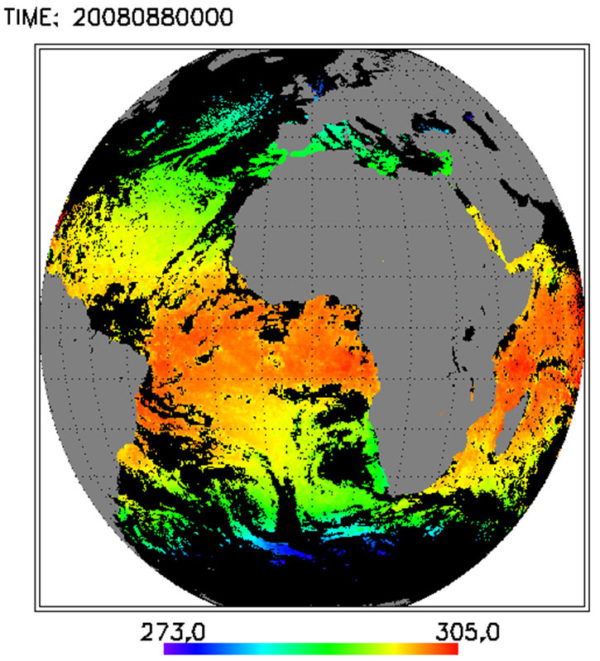
Now before you get too excited about all the datas, you are going to have have to chill for year before getting it. Scientists need this time to make sure the data is correct and accurate. One does not simply trust data from a new instrument. But after that one year, it will be fully operational and the data will go live.
But wait…there’s more! *CUE INFOMERCIAL OOHS AND AAHS*. GOES-R is only the first of 4 new weather satellites NOAA is planning on launching. This whole program will extend the US’s weather forecasting abilities until 2036, or right until Justin Bieber hits middle age (at which time both will likely need a reboot). And through cooperative data sharing agreements with other countries that have launched their own weather satellites, this satellite also improves global weather forecasting. Although I can not make any guarantees this will stop people from grumping about weather forecasts. Sorry weather people.
But seriously, satellite oceanography is a wonderful marriage of earth and space science. It gives the big picture of how things are changing everyday on the earth. How do you think we found the BLOB people? Or when there is going to be an El Niño? Satellites, that’s how. Looking forward to the launch of many more!
For more info check out NOAA/NASA’s GOES-R site.
RELEASE THE SATELLITE!
Share the post "Wherever it GOES, I GOES, we GOES. NOAA and NASA launch another satellite acronym into space."

